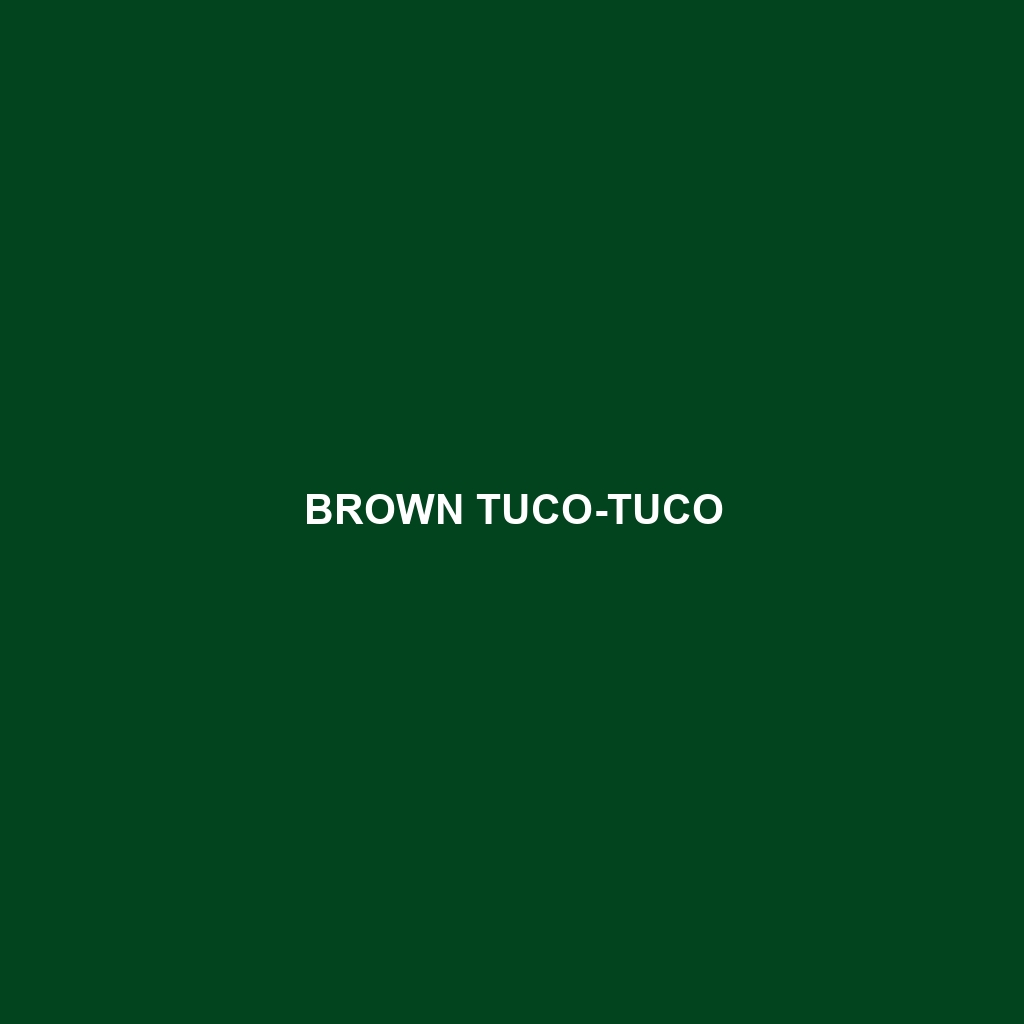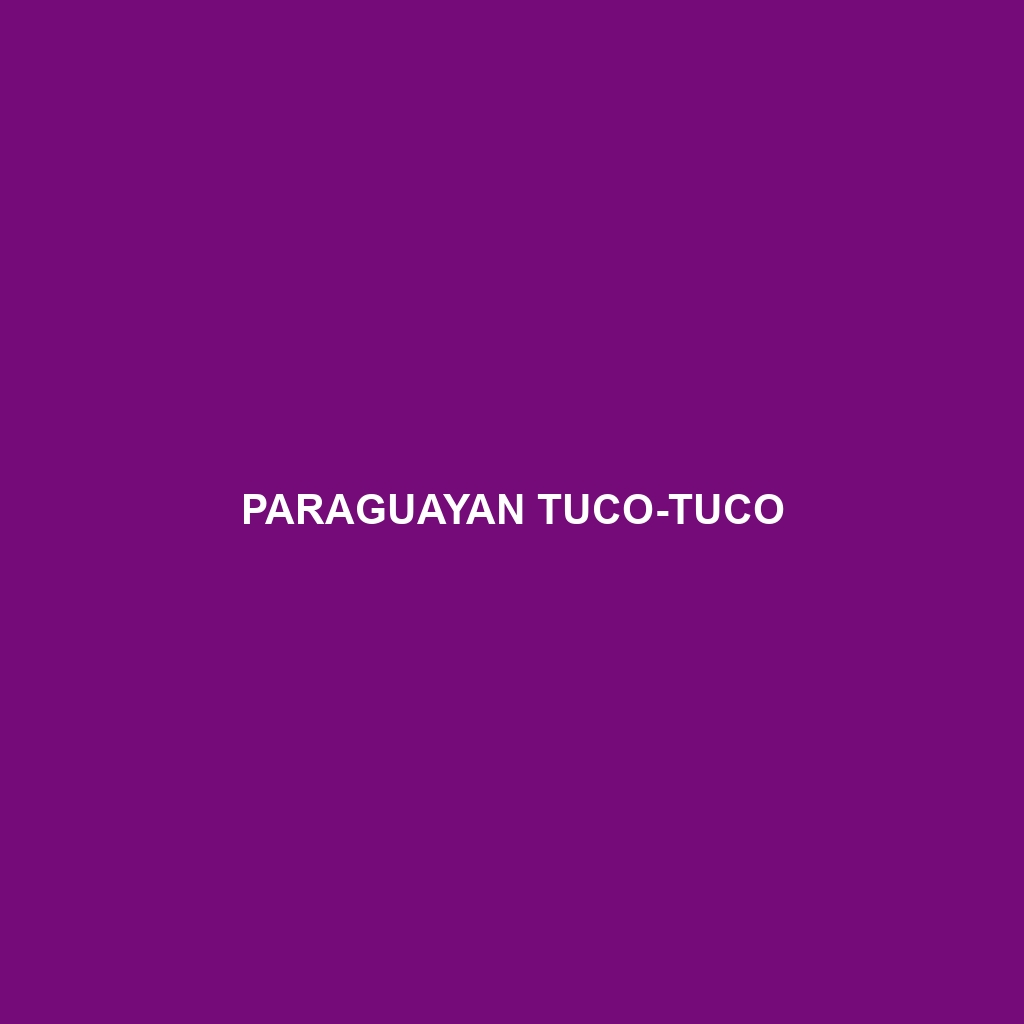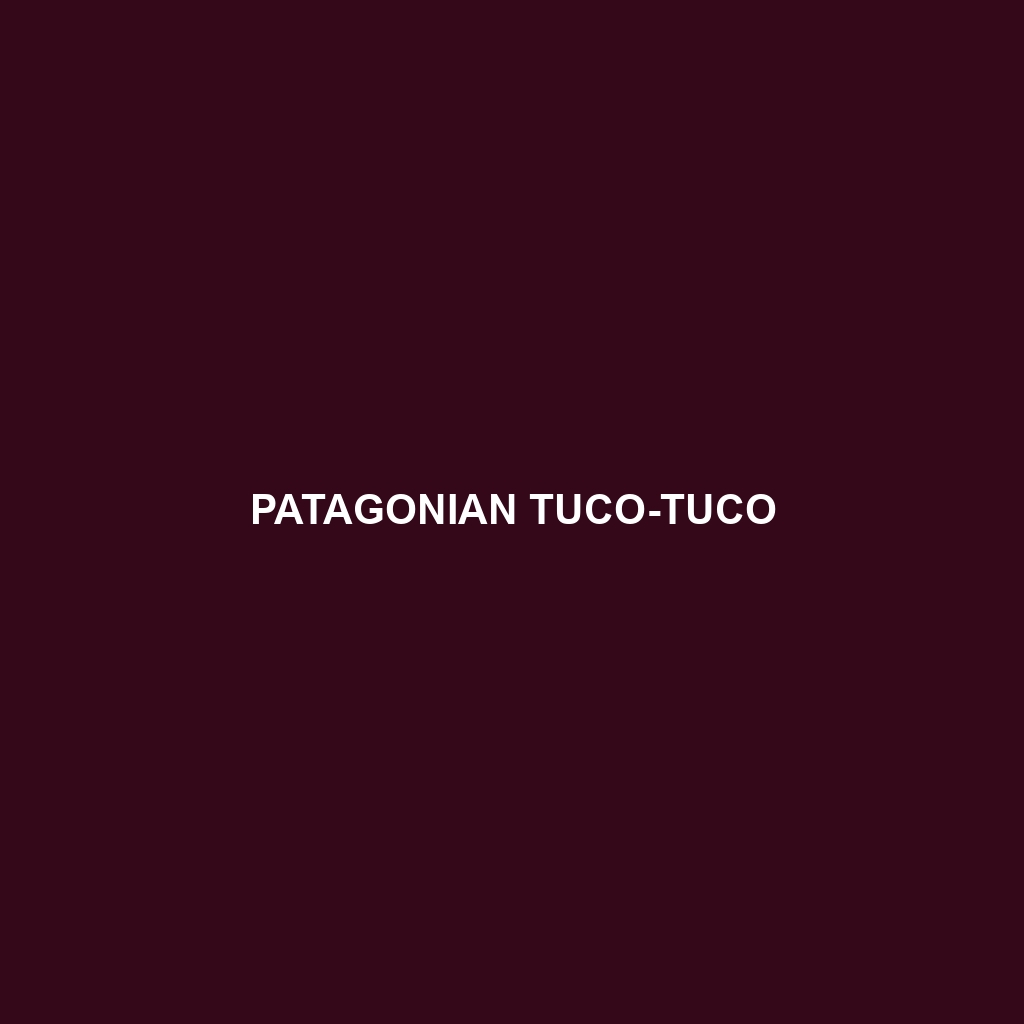Explore the fascinating world of the Common Degu, a social rodent native to Chile, known for its distinctive appearance and complex behaviors. Discover its natural habitat, dietary needs, and role in the ecosystem, along with intriguing facts about its reproduction and longevity. Learn how these unique creatures contribute to their environment while highlighting the importance of ongoing conservation efforts.
Tag: behavior
Bridges’s Degu
Discover the intriguing Bridges's Degu (<i>Octodon bridgesi</i>), a small rodent native to the dry scrublands of central and southern Chile. Known for their playful social behaviors and unique adaptations to their environment, these herbivorous creatures play a vital role in seed dispersal and soil aeration, while also facing threats from habitat loss and climate change. Learn more about their habitat, diet, and conservation status in our latest blog post.
Santa Fe Tuco-tuco
Discover the fascinating world of the Santa Fe Tuco-tuco, a medium-sized rodent native to Argentina's arid grasslands. With its robust burrowing behavior and vital role in soil aeration, this vulnerable species is not only intriguing to observe but also essential for the ecosystem's health. Learn about its habitat, diet, and the conservation efforts aimed at protecting this unique creature.
Brown Tuco-tuco
Discover the fascinating world of the Brown Tuco-tuco (<i>Ctenomys adecli</i>), a unique rodent native to the grasslands of Argentina. This robust herbivore is a master burrower, playing a vital role in its ecosystem while adapting to challenges like habitat loss and drought. Explore its behaviors, diet, reproduction, and conservation status in this comprehensive overview.
Monte Hermoso Tuco-tuco
Discover the Monte Hermoso Tuco-tuco, a unique rodent species native to Argentina's coastal sand dunes. Learn about its fascinating habitat, distinctive physical features, nocturnal behavior, herbivorous diet, and crucial role in maintaining the ecosystem, as well as the conservation challenges it faces. Join us in exploring the life of this vulnerable species and its remarkable adaptations.
Paraguayan Tuco-tuco
Discover the fascinating world of the Paraguayan Tuco-tuco, a medium-sized rodent native to the grassy plains of Paraguay. Learn about its unique habitat, nocturnal behavior, and vital role in ecosystem health, as well as the conservation challenges it faces due to habitat loss. This blog post highlights the intriguing adaptations and social structures of this vulnerable species.
Magellanic Tuco-tuco
Discover the fascinating world of the **Magellanic Tuco-tuco** (*Ctenomys magellanicus*), a unique rodent native to the temperate grasslands and forests of Argentina and Chile. Known for their extensive burrowing systems and robust physical characteristics, these vulnerable creatures play a crucial role in their ecosystem by aerating soil and dispersing seeds. Learn more about their behavior, diet, and conservation status in our insightful blog post.
San Juan Tuco-tuco
Discover the intriguing world of the San Juan Tuco-tuco, a medium-sized rodent native to Argentina's mountainous regions. Learn about its unique adaptations, social behavior, and vital role in the ecosystem as a burrower and seed disperser, alongside conservation challenges facing this vulnerable species.
Patagonian Tuco-tuco
Discover the fascinating world of the Patagonian Tuco-tuco (<i>Ctenomys patagonicus</i>), a unique burrowing rodent found in the arid landscapes of Patagonia. With its remarkable tunneling skills, distinctive vocalizations, and vital role in the ecosystem, this medium-sized herbivore faces vulnerabilities amid habitat loss. Explore its behavior, diet, and conservation challenges in our latest blog post.
Anderson’s Tuco-tuco
Explore the fascinating world of Anderson's Tuco-tuco (<i>Ctenomys andersoni</i>), a vulnerable rodent native to the grasslands of central Argentina. Discover their unique burrowing behavior, vital role in soil aeration, and ecological significance, along with the conservation challenges they face due to habitat loss. Join us as we delve into the life of this remarkable creature and its importance in maintaining biodiversity.









